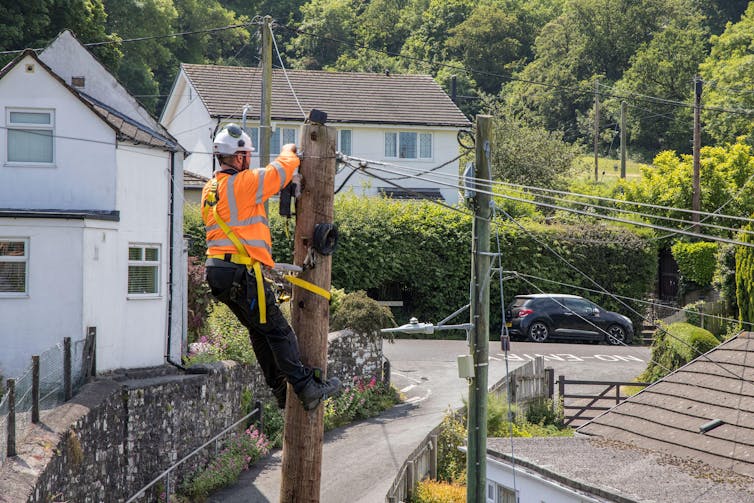In an era where businesses and households depend on the internet for everything from marketing to banking and shopping, the lack of adequate digital access can be a significant hurdle. And our recent research shows that many homes and businesses in the UK are being left stranded in the digital age.
Our two studies focused on a rural county in Wales, Ceredigion, where the lack of reliable digital infrastructure worsened the impacts of the pandemic on families and businesses. Poor digital accessibility and connectivity exacerbated the stress levels of families who were already having to juggle home schooling and working from home.
Similarly, businesses had to struggle with issues around internet provision, availability of effective digital infrastructure and digital proficiency while working and running businesses from home.
Our research involved two online surveys. One focused on households and the other on businesses and the self-employed between April and June 2021. The survey questions were designed to address the challenges and opportunities brought about by the pandemic.
Some important themes emerged in the responses we received to both surveys. These were insufficient digital accessibility and connectivity, lack of digital skills and training opportunities and the cost of broadband and mobile access.
Household experiences
Our research showed that 12% of homes did not have enough digital equipment for their needs during the pandemic and 76% of these included children who were being home schooled. Schools and some workplaces provided equipment in some instances, but 18% of households had to borrow equipment.
Despite that ability to borrow, many homes found themselves juggling equipment between homeworking adults and children learning online. Many pupils relied on small mobile devices to access lessons, while others lacked access to equipment like printers.
These problems were compounded in rural and remote areas, where slow broadband speeds and a lack of reliable mobile signal were cited as the biggest issues. Other issues included the cost of broadband and mobile access, the lack of digital skills or training opportunities to improve digital skills, poor customer service from broadband providers and issues with connectivity.
Igboekwu, Plotnikova & Lindop, Author provided (no reuse)
Business and self-employed experiences
The pandemic brought similar challenges to businesses. The closure of non-essential firms during the pandemic led to a surge in e-commerce. Companies that could embrace online sales were able to continue operating despite lockdowns and restrictions.
But businesses that were slow to adopt e-commerce or lacked the necessary infrastructure struggled to adapt. In fact, our research found that 47% of businesses faced difficulties with digital access and connectivity during the pandemic. Some of the other issues faced by businesses included:
• a lack of reliable broadband or mobile (37%)
• slow broadband speed (29%)
• poor mobile signal (26%)
• lack of digital skills or access to training schemes (16%)
• the cost of access (13%)
People working from home in rural locations also had problems due to a lack of digital infrastructure, poor connectivity and a lack of digital skills.

Chris Howes/Alamy
Bridging the gap
In the future, an increased reliance on online work, education and public services, such as online health and welfare support, will further disadvantage those without adequate internet access. The digital divide is widening between those with higher incomes and those with lower incomes.
For example, households with higher incomes were more likely to have had access to technology for home schooling and remote working during the pandemic, unlike those with lower incomes.
The gap in access to digital technology is often determined by location too. Remote and sparsely populated areas often lack adequate broadband and mobile signal coverage. Bridging this digital divide is crucial for economic growth, social inclusion and access to essential services.
Read more:
How teachers supported children and parents through COVID-19 school closures
To address the digital divide, the UK and devolved governments need to invest in digital infrastructure in rural areas to ensure that everywhere has at least a minimum quality coverage. Local authorities could introduce schemes that enable people to gain access to cost-effective computer devices and internet access.
Expanding digital literacy and empowering businesses in rural areas is also crucial. Enhancing digital skills training would better prepare future generations for the digital world.
Additionally, businesses in rural areas require tailored support, such as funding for digital infrastructure upgrades, training opportunities and guidance on consumer privacy and protection, to enable their digital growth and sustainability.



